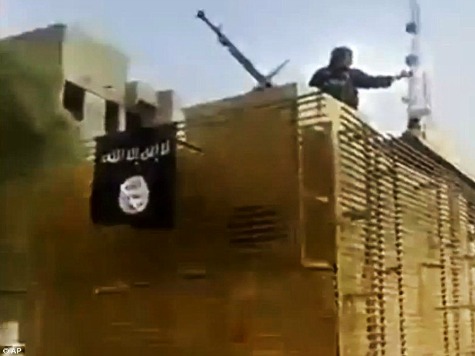Syrian fighter bombers hit the Islamic State of Iraq and al-Sham (ISIS) targets in the Iraqi border town of Qaim in Anbar province on June 24th. The bombings were not the first time that the Syrian Air Force has acted against ISIS targets along the border. But three bitter adversaries–the United States, Iran, and Syria–are demonstrating, by defending the Iraqi government, that countries usually have interests rather than friends.
Two United States-led invasions and a no-fly zone over most of Iraq eliminated the majority of Iraq’s Air Force that had once been one of the strongest in the region. Currently, Iraq has no front-line fighters or attack helicopters capable of using precision munitions. But they were scheduled to receive the first four of their order of 36 F-16Q fighter jets in late 2014.
As ISIS was secretly preparing to overrun Mosul and most of northwestern Iraq, Ambassador Lukman Faily, who was at Lockheed Martin’s Fort Worth, Texas, plant commented to Reuters during a ceremony to formally accept delivery from the company and the U.S. government, “Iraq is a large country with over 3,600 km of borders, and we need to protect them.” Faily added, “We as a country didn’t have that capability before.”
Lack of air power was obvious on June 23th when ISIS organized a military parade of captured American weaponry in the city of Mosul to demonstrate its new military capability and to humiliate Iraq’s inability to conduct aerial bombardment.
The Iraqi Air Force only operates a handful of propeller-driven Cessna Caravans that can attack ground targets with Hellfire missiles. But these planes are easy targets for the type of shoulder-mounted stinger missiles recently captured by ISIS during its invasion. Baghdad does have a few attack and light attack reconnaissance helicopters that, according to Stratfor, did help blunt ISIS militants’ advance south down the Tigris River Valley after Iraqi army resistance disintegrated.
ISIS’ main strength is along the Tigris River and Euphrates River Valleys, which extend north and west from Baghdad toward the Syrian border. Since the Iraqi government brought troops in from around the country to protect Baghdad, the border area with Syria was abandoned to ISIS control.
The United States already has military advisers in Baghdad, and the only U.S. statement on the June 24th incident was a denial of responsibility, along with a confirmation that some air attacks had taken place.
Syria’s airstrikes along the border will not appreciably affect the conflict’s outcome in Iraq. But the Syrian rebels, some of whom are supported by foreign actors such as the United States, are also fighting alongside ISIS in Syria and Iraq, according to Stratfor Global Intelligence.
Sunni militancy is threatening large portions of Iraq and, by extension, United States and Iranian regional interests. By using its air force to bomb ISIS convoys parading along the border, the embattled Syrian regime of Bashar al-Assad is seeking to enhance its international standing. Given their common interest in defeating ISIS, Syria, the United States, and Iran may see their cooperation grow more overt over time.
Reuters reported that ISIS militants and allied Sunni tribes surrounded Camp Anaconda, an airbase in Iraq that is under U.S. control, striking it with mortars, witnesses said on June 25. Witnesses also stated that the militants were battling Iraqi forces in the nearby town of Yathrib late June 24 and early June 25. ISIS and its allies are gaining reach across a large trans-border region.
The author welcomes feedback and will respond to reader comments.

COMMENTS
Please let us know if you're having issues with commenting.